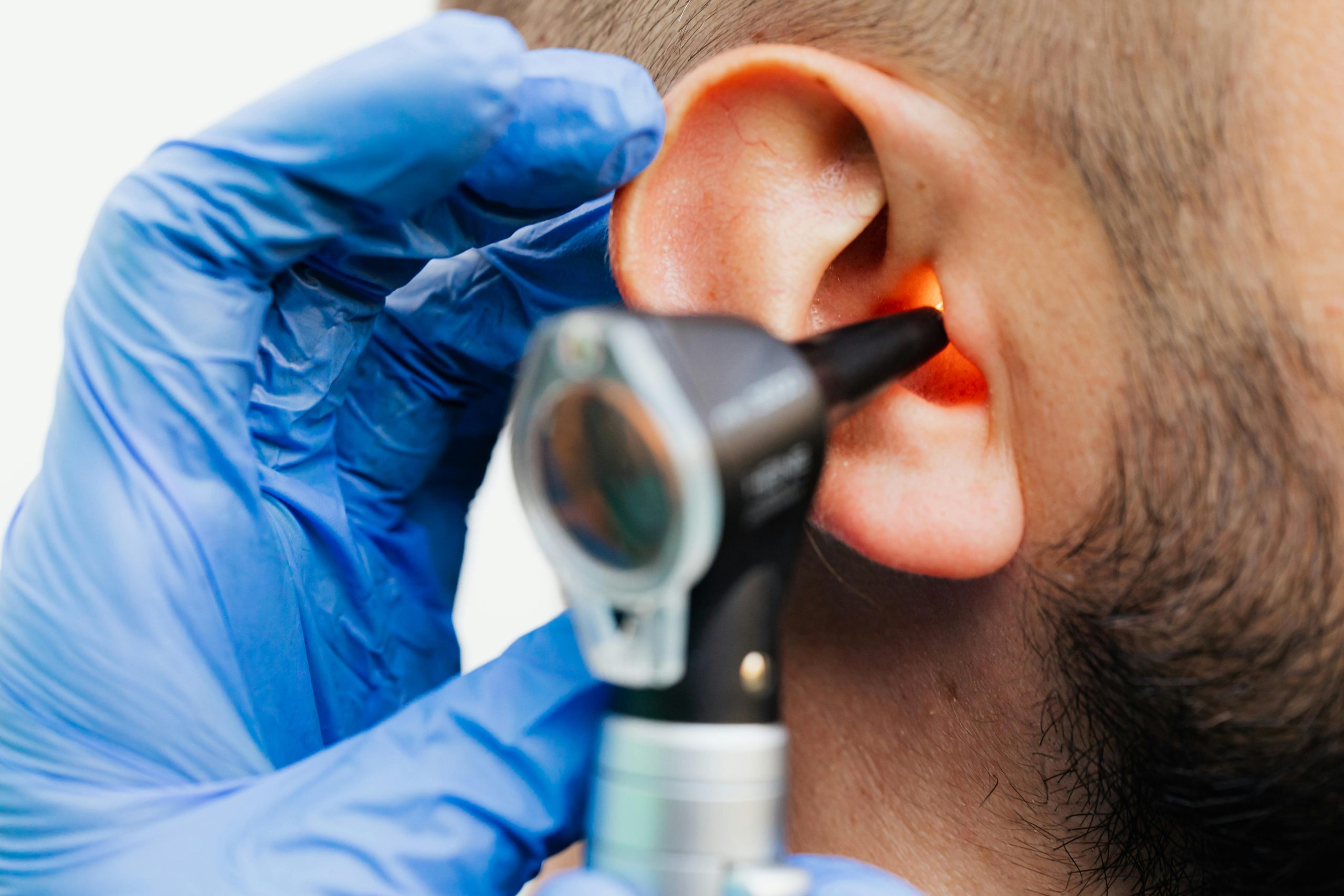
The experience of Meniere’s disease is often a highly unpredictable and profoundly disorienting journey, characterized by a constellation of symptoms arising from an obscure disturbance deep within the fluid-filled labyrinth of the inner ear. It moves far beyond a simple case of dizziness or hearing trouble, manifesting as a complex, chronic condition that fundamentally disrupts the sensory anchors of equilibrium and auditory perception. The definitive characteristic is the episodic nature of its attacks, which are marked by a unique triad of symptoms: rotational vertigo that is frequently overwhelming, fluctuating sensorineural hearing loss, and a persistent or intermittent low-pitched roaring sound known as tinnitus, often accompanied by a sensation of aural fullness or pressure in the affected ear. Unlike a benign form of positional vertigo, a Meniere’s episode is an involuntary, life-interrupting event, lasting from a minimum of twenty minutes up to an entire day, leaving the individual physically exhausted and psychologically vulnerable.
The Fundamental Pathology: Endolymphatic Hydrops
The physical pathology most consistently associated with Meniere’s disease is a condition termed endolymphatic hydrops. This finding, observed in post-mortem studies of the temporal bone, involves an abnormal accumulation and pressure-driven distension of endolymph, the potassium-rich fluid found within the membranous labyrinth of the inner ear. This fluid system, particularly within the cochlea and the vestibular apparatus (the organs responsible for hearing and balance, respectively), becomes mechanically overloaded. The excess fluid volume causes the delicate membranes, such as Reissner’s membrane in the cochlea, to bulge. While endolymphatic hydrops is considered the hallmark physical finding, the relationship between its presence and the clinical symptoms of Meniere’s is not a simple cause-and-effect equation. Hydrops can be detected in individuals who never develop the characteristic vertigo attacks, suggesting that the problem is not merely the fluid’s volume, but the dynamic instability it creates within the system.
“…involves an abnormal accumulation and pressure-driven distension of endolymph, the potassium-rich fluid found within the membranous labyrinth of the inner ear.”
Current theories on the direct cause of the episodic attacks focus on the integrity of the membranous labyrinth. It is hypothesized that the extreme pressure exerted by the hydrops can lead to microscopic ruptures of the membranes that separate the endolymph from the surrounding perilymph, the sodium-rich fluid that fills the rest of the inner ear space. This temporary breach allows the two fluids, which maintain dramatically different chemical compositions, to mix. The sudden mixing of high-potassium endolymph with the perilymph is thought to chemically overload and paralyze the sensory hair cells responsible for converting motion and sound into neural signals, causing the acute, intense vertigo, hearing loss, and tinnitus that define an attack. Once the membrane seals, the fluid balance is slowly restored, and the symptoms abate until the next pressure spike causes another rupture. This mechanism explains the abrupt onset and resolution of the most severe symptoms, highlighting the volatile nature of the inner ear’s fluid dynamics in the context of the disease.
Unraveling the Etiological Puzzle Beyond Fluid Imbalance
The specific reason that endolymphatic hydrops develops in the first place remains an open question, and there is no single, universally accepted etiology for Meniere’s disease. Instead, researchers and clinicians point to a confluence of potential contributing factors that likely act in concert to impair the inner ear’s normal fluid regulation system. Impaired resorption of the endolymphatic fluid by the endolymphatic sac, a structure believed to be critical for the drainage and volume control of the inner ear, is a leading theory. Developmental anomalies of the vestibular aqueduct, which houses the endolymphatic duct and sac, have been observed in some patients, suggesting a congenital factor that predisposes individuals to poor fluid clearance.
“…researchers and clinicians point to a confluence of potential contributing factors that likely act in concert to impair the inner ear’s normal fluid regulation system.”
Beyond anatomical issues, immunological responses are a significant area of investigation. It is hypothesized that some cases may involve an autoimmune mechanism where the body mistakenly attacks tissues within the inner ear, leading to chronic inflammation and subsequent scarring or dysfunction of the fluid-regulating structures. Viral infections, particularly those affecting the nervous system, have also been implicated, potentially causing damage to the inner ear’s delicate sensory or supporting cells. Furthermore, there is a recognized link with migraine headaches, a systemic disorder of neurological hypersensitivity, which suggests a possible shared vascular or neurological pathway in a subset of patients. This multifactorial view underscores the complexity of the condition, moving its definition away from a single-point failure to a systemic problem involving genetics, environment, and immune function.
The Challenges of Definitive Diagnosis and Exclusion
Diagnosing Meniere’s disease is primarily a clinical process, relying heavily on a patient’s self-reported history of episodic vertigo, coupled with audiometric confirmation of sensorineural hearing loss in the affected ear, and the presence of tinnitus or aural fullness. There is no singular blood test or definitive biomarker that can confirm the diagnosis, making it one of exclusion where other conditions mimicking its symptoms must first be systematically ruled out. The diagnostic criteria, established by organizations like the American Academy of Otolaryngology—Head and Neck Surgery, require at least two spontaneous episodes of rotational vertigo, each lasting 20 minutes or longer, alongside documented low-to-mid frequency hearing loss on an audiogram.
“…the diagnostic criteria… require at least two spontaneous episodes of rotational vertigo, each lasting 20 minutes or longer…”
While the patient history is paramount, objective tests play a supporting role. Advanced magnetic resonance imaging () techniques, which can visualize the fluid spaces of the inner ear after the injection of a contrast agent, have made it possible to detect endolymphatic hydrops in living patients. However, the use of this imaging to confirm the diagnosis is not yet standard across all centers, largely because, as noted previously, the presence of hydrops does not always correlate perfectly with the clinical presentation of symptoms. The core challenge in diagnosis remains the fluctuating nature of the symptoms; catching the characteristic hearing loss or documenting the vestibular function during an acute attack is often logistically impossible, demanding a reliance on careful, longitudinal clinical observation.
Conservative Management as the First Line of Defense
Since a permanent cure remains elusive, the initial treatment strategy for Meniere’s disease focuses overwhelmingly on conservative, non-invasive methods aimed at controlling the frequency and severity of the debilitating vertigo attacks. The cornerstone of this approach is often a combination of dietary modifications and prescription medications. A low-sodium diet is universally recommended based on the theory that limiting salt intake helps to reduce overall fluid retention in the body, which, in turn, may reduce the volume and pressure of the endolymphatic fluid in the inner ear. Patients are frequently advised to limit caffeine, alcohol, and nicotine, as these substances can act as vasoconstrictors, potentially disrupting the delicate blood flow and fluid homeostasis of the inner ear.
“A low-sodium diet is universally recommended based on the theory that limiting salt intake helps to reduce overall fluid retention in the body…”
Pharmacological management typically involves two distinct classes of drugs. Diuretics, or “water pills,” such as hydrochlorothiazide or triamterene, are prescribed on a long-term basis to help the body excrete excess fluid and thereby theoretically maintain more stable inner ear fluid pressure. For managing an acute attack, a different set of medications is used: vestibular suppressants, like meclizine or diazepam, and anti-nausea agents (antiemetics), are taken to lessen the immediate, debilitating effects of the severe vertigo. This dual-pronged strategy addresses both the long-term goal of prevention and the immediate need for symptom abatement during an episode, even though the long-term effectiveness of certain common prescriptions is still debated within the scientific community.
Interventional Therapies for Intractable Vertigo
When conservative management fails to adequately control the vertigo attacks, and the patient’s quality of life remains significantly impaired, the physician may consider more interventional or destructive procedures. These treatments are generally reserved for individuals with frequent, severe vertigo who have already experienced substantial hearing loss in the affected ear. One common interventional approach is the transtympanic injection of a medication, usually the antibiotic Gentamicin, directly into the middle ear space, where it can diffuse into the inner ear. Gentamicin is an ototoxic drug, selectively damaging the vestibular hair cells responsible for sending balance signals, thereby reducing or eliminating the severe vertigo attacks. The significant drawback is the elevated risk of exacerbating the hearing loss, a risk carefully weighed against the severity of the patient’s dizziness.
“…the physician may consider more interventional or destructive procedures.”
Alternatively, a corticosteroid injection may be used, which aims to reduce inflammation in the inner ear without the same risk of hearing damage, providing a less destructive, albeit potentially less permanent, solution for vertigo control. Surgical options are the final resort for the most refractory cases. Procedures like endolymphatic sac decompression are designed to enhance fluid drainage and reduce pressure by creating more space around the sac, while a procedure called a vestibular neurectomy involves selectively cutting the balance nerve, permanently eliminating vertigo while attempting to preserve remaining hearing. These interventional and surgical pathways highlight the gravity of the disease and the lengths to which treatment must go when quality of life is severely compromised by unpredictable disequilibrium.
The Progressive Nature and Long-Term Implications
Meniere’s disease is widely regarded as a progressive condition, even though the rate of progression varies dramatically among individuals. While the acute, spinning vertigo attacks may eventually diminish and even cease after several years in many patients, the chronic, insidious symptoms often remain and may worsen over time. The sensorineural hearing loss, initially fluctuating, often becomes permanent and profound in the affected ear. Furthermore, as the disease progresses, some patients develop chronic balance issues, experiencing a persistent unsteadiness that replaces the episodic vertigo, making simple activities like walking in the dark or on uneven ground challenging.
“…the sensorineural hearing loss, initially fluctuating, often becomes permanent and profound in the affected ear.”
Another severe long-term manifestation is the potential for drop attacks, or “Tumarkin’s otolithic crises,” which are sudden, non-vertiginous falls without loss of consciousness, often occurring years after the onset of the main symptoms. These attacks are thought to be caused by a sudden mechanical failure of the utricle and saccule, the balance organs. The long-term prognosis, therefore, is not defined by the cessation of vertigo, but by the ultimate state of the patient’s hearing, balance, and overall functional capacity. The unpredictability and eventual cumulative sensory loss necessitate a robust approach to rehabilitation, including the use of hearing aids and vestibular therapy, to help the brain compensate for the irreversible damage that occurs over the course of the disease.
Beyond the Physical: The Emotional and Psychological Burden
The impact of Meniere’s disease extends far beyond the physical symptoms, placing a significant and often crippling emotional and psychological burden on those affected. The unpredictability of the vertigo attacks fosters a profound sense of anxiety and a pervasive fear of public embarrassment or physical injury. The inability to predict when or where a severe attack might occur—whether at the wheel of a car, during a work presentation, or while simply crossing a street—can lead to social withdrawal, isolation, and the development of situational phobias. Many patients report symptoms of clinical depression and generalized anxiety, which are a direct consequence of living with a chronic, life-altering condition that constantly threatens their autonomy and safety.
“The unpredictability of the vertigo attacks fosters a profound sense of anxiety and a pervasive fear of public embarrassment or physical injury.”
The constant struggle with fluctuating hearing loss and tinnitus further contributes to the cognitive load and mental exhaustion. The roaring, buzzing, or hissing sounds of tinnitus can interfere with sleep and concentration, and the strain of listening with a damaged auditory system creates fatigue. Effective management, therefore, must be holistic, addressing the neuro-otological disorder while simultaneously providing psychological support through counseling, cognitive-behavioral therapy, and support groups, acknowledging that successful treatment requires treating the person, not just the ear.
